Co-written by Sarah Herron and Morgan Tilton
My first-ever backpacking adventure traced an unforgettable and strenuous slot-canyon route near Escalante, Utah. I joined Dylan—and his family—on the remote scramble through 8 miles of Colorado Plateau desertland. At the time, we’d only been dating for a month. He lived in the Colorado Rockies. I lived in L.A. To say I was out of my comfort zone is an understatement.
Before my humbling introduction to backcountry self-preservation, I had an oversimplified perspective of multiday treks. ‘Backpacking is pretty much an overnight hike with your sleeping bag and tent,’ I naively told myself when Dylan invited me to join. By the end of our trip, I’d taken a full course in the minutiae of survival! It was hard work but life-changing and gratifying in a completely new way. I derived a deep-seated empowerment from the experience of living beyond home comforts, under the stars, and in all conditions. To date, Willow & Fortymile Gulch Loop, the hike we went on, still encompasses one of the most beautiful landscapes I’ve ever seen.
Now, three-years-and-counting later, backpacking continues to be an incredible tool for me to mentally and emotionally reset. Being outside for more than a single day literally forces me to unplug and just BE. It’s the most effective way to curb my second-nature tie-up in technology. It liberates me to know I can carry everything that I need to subsist in the wild on my back. Ultimately, it’s shown me that I am capable. So are you.
For the uninitiated, backpacking can seem overwhelming—and I get it! But, if you properly prepare and go with someone who’s well-versed, you can learn quickly, surprise yourself, and create awe-inspiring memories.
How to Get Started Backpacking
That first spontaneous venture with Dylan’s family was a deep-dive in backpacking skills. I learned everything from how to filter water to route finding and calculating enough calories across my meals and snacks. I gained an awareness of my surroundings and how to safely move through the wilderness. That said, it was A LOT to digest at once.
For your inaugural excursion, give yourself plenty of time to get organized and grounded beforehand. Plan out your route, gear, and food. If your group leader is chief-of-tasks, don’t be afraid to ask questions. Get involved, and do background research about the trail. To help, here are the fundamental steps to draw-up your premier backpacking trip:
Choose Where to Go Backpacking
Picking out a destination for your first backpacking trip is one of the best parts! Consider exploring the backcountry campsites that are nearest to where you live, rather than road tripping or jet-setting to a far-off location. The latter is super fun but more manageable after you get the basics down.
An amazing range of public lands exists for overnight trips, right in your backyard or short drive away. You could explore areas managed by the National Park Service (NPS) including National Parks, National Monuments, National Recreation Areas, and other sites.
You could also check out routes in National Forests, which are managed by the U.S. Forest Service (USFS); through landscapes that are managed by the Bureau of Land Management (BLM); or in your local state parks.
Take note, wilderness areas are divvied up and co-managed by the NPS, BLM, USFS, and U.S. Fish and Wildlife Service. So, don’t be confused if you discover a protected wilderness area that overlaps with a national park or BLM-managed district, for instance!
Here are several great interactive maps to help kickoff your brainstorm session:
Another great resource is local outdoor shops, like REI Co-op, which you can call to seek advice on where to go backpacking.
After you narrow down a general place that you want to visit, call or swing by the district office or visitor center that oversees that region. Ask the park ranger what overnight trails they recommend for a backpacking trip, given the time of year, weather, traffic flow, and area closures that might exist, such as for migratory wildlife, mudslides, snow, construction or otherwise.
Visitor centers and land management offices often provide complimentary physical maps that can be given or mailed you. Additionally, guide books are a reliable, thorough resource for planning trips! Local visitor centers and outdoor shops typically have a good selection on hand.
Overall, you’ll need to find out the following information about your trek:
-
What’s the trailhead location (also, is there parking or a shuttle for drop-off)
-
Are there any necessary permits (entrance fees, camping/backcountry fees, parking fees, etc.)
-
Are any reservations required for campsites or entrance
-
What’s the round-trip trail mileage
-
What’s the accumulative trail elevation gain
-
What’s the rated difficulty of the trail (easy, intermediate, advanced, expert) and WHY. Is the trail steep, remote, rocky? Is there a river crossing? Is the route unmarked?
-
Are there water sources (where you can filter and refill your water carrier)
-
Is any gear required such as a bear canister or wag bag? Does the gear come with the permit? Or, is there a local shop that rents or sells those items?
-
Are any items highly recommended for that area or season, such as bug repellent or bear spray?
-
Are there any unique Leave No Trace guidelines that you should know for that area?
-
Are campfires allowed? Are there designated fire rings? Do you need a backpacking stove to cook?
Remember, mileage is NOT a direct indication of how challenging or technical a trail might be. A 3-mile backpacking rendezvous could feel harder than running a few miles on your neighborhood sidewalks! You’ll be carrying gear, food, and water. You might be ascending and descending slopes, which takes a ton of energy—and therefore lot’s of breaks and snacks. To start, aim to hike 4 to 6 miles per day, then build from there.
Assemble Your Gear
Everyone’s backpacking gear list can be personalized depending on individual needs and a willingness to shlep the weight! That said, a basic kit usually includes a backpacking tent. (Some people opt to sleep in hammocks, build shelters, or stay in shelters along specific trails.) Make sure your tent is the right size for the group. All of the pieces can be divided among everyone’s packs.
For snoozing, you’ll need a sleeping bag (check that the temperature rating will shield the overnight lows), and a sleeping pad that both fit your frame.
You might be tempted to pack a sandwich and skip cooking outside but don’t! It’s so comforting and satisfying to enjoy a warm meal after a well-earned hike. So, bring backcountry cookware, a backpacking stove, and an adequate amount of fuel.
If you don’t own any of this gear, yet, don’t worry: Many gear rental programs are popping up around the country. Check with your local gear shop and they can help point you in the right direction.
Dress in layers and pack extra clothes (puffy, hat, gloves) for nighttime, when the temperatures drop. Opt for synthetic or wool-blend fabrics, rather than cotton, because they dry fast. Think about clothes that fit well beneath a weighted backpacking pack like hiking shorts with a comfortable waistband and a t-shirt with shoulder coverage. I usually bring one extra set of socks and undies but rewear my day clothes. Don’t forget your headlamp.
Sun protection is vital: pack a hat, sunglasses, sunscreen, lip balm with SPF, and a Buff. If you’re going to extremely high altitudes consider wearing protective sun gloves!
Here are my treasured tried-and-true gear pieces that I never leave at home:
-
The Danner Mountain 600 is my favorite hiking boot! I’ve owned four pairs. They are reasonably lightweight but offer good ankle support and are classically fashionable.
-
The Deuter Futura Vario 45+10 SL Backpack is the most comfortable frame I’ve found for my shoulders and hips (I have a smaller frame).
-
Chacos or down slippers (whatever pair you prefer!) for camp
-
My Down Puffy Rumpl blanket is a must. I get cold easily, and this item is super lightweight. I strap it onto my backpack and bring it along to have at camp and for cool evenings.
-
I’m a princess and I’ll admit it. I NEED a good plush pillow. The inflatable pillows don’t cut it for me. I recently discovered the Therm-a-Rest Compressible Pillow and I LOVE IT! I took it on my international trip to hike Kilimanjaro, and it’s also great for airplane rides.
-
For water, I pack my LifeStraw Go water bottle (you can fill it straight from a lake or stream), and our Platypus GravityWorks 6L Filter System, which is a gravity filter. The latter is VERY convenient, but may need a second set of hands to get it set up. (I find it challenging with one hand, but if I needed to, I could do it by myself.)
Map Out the Meals
Write down your menu for the trip, lest you forget a meal! Remember to count each breakfast, lunch, and dinner for each day you’ll be on trail. Include any overnights at the trailhead before and after the mission. And always pack snacks. I carry at least one snack for between each meal.
You can do prep work for recipes at home and use dry, quick-cook ingredients like pasta and oatmeal. Many companies also make instant backpacking meals, which you can pick up at a local gear shop. Bringing small containers of tasty seasoning or condiments like hot sauce and butter is simple but can feel luxurious. Flavors explode on your tastebuds, because your appetite is through the roof! For single-night jaunts or the first night on a longer trip, pack fresh goodies like broccoli and avocado to add to that first dinner and lunch.
Calorie needs are different for every person but after carrying a heavy pack more multiple miles, a 400-calorie meal won’t cut it. Especially if you’re hiking the next day! Your body also uses energy at camp, while trying to stay warm. In addition to your menu, pack a couple of extra instant meals: they don’t weigh much and can save you or your hiking partners in a pinch.
Get Equipped, Mentally
One of the most important lessons of backpacking, beyond all preparedness, is to accept that the conditions may not always be ideal. Or comfortable. Or high-energy. And you’re allowed to ask for help. It’s OK to be vulnerable—and it doesn’t make you an inadequate outdoor partner.
On our first backpacking trip, through Willow and Fortymile Gulches, I had to ask for help. I needed an extra set of hands to pull on my pack. I asked Dylan to carry my gear as we waded through pools in the slot canyons. I needed help assembling the gas stove. I had to ask where to go pee and poop. Yes, I felt overwhelmed and wanted to cry at different points, BUT it was deeply reverential to learn something so unfamiliar.
So, prime yourself mentally for things to not go totally according to your vision—which truly is all part of the adventure. Let the adrenaline of going to a new place sink in. And, as you get accustomed to your gear and planning trips, backpacking gets a bit easier—but continues to be rewarding and unforgettable.
Before you go, don’t forget to study or refresh Leave No Trace principles.
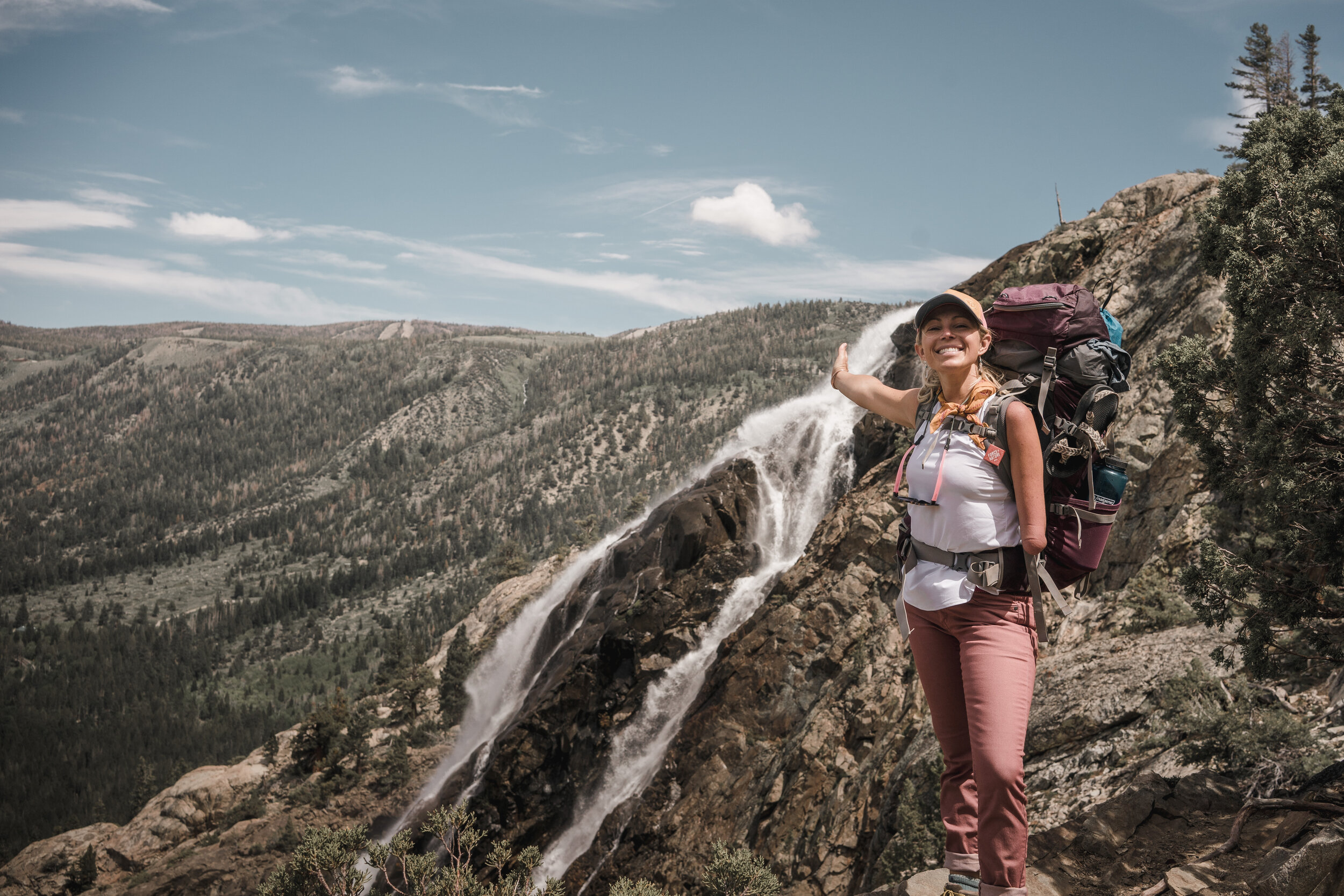
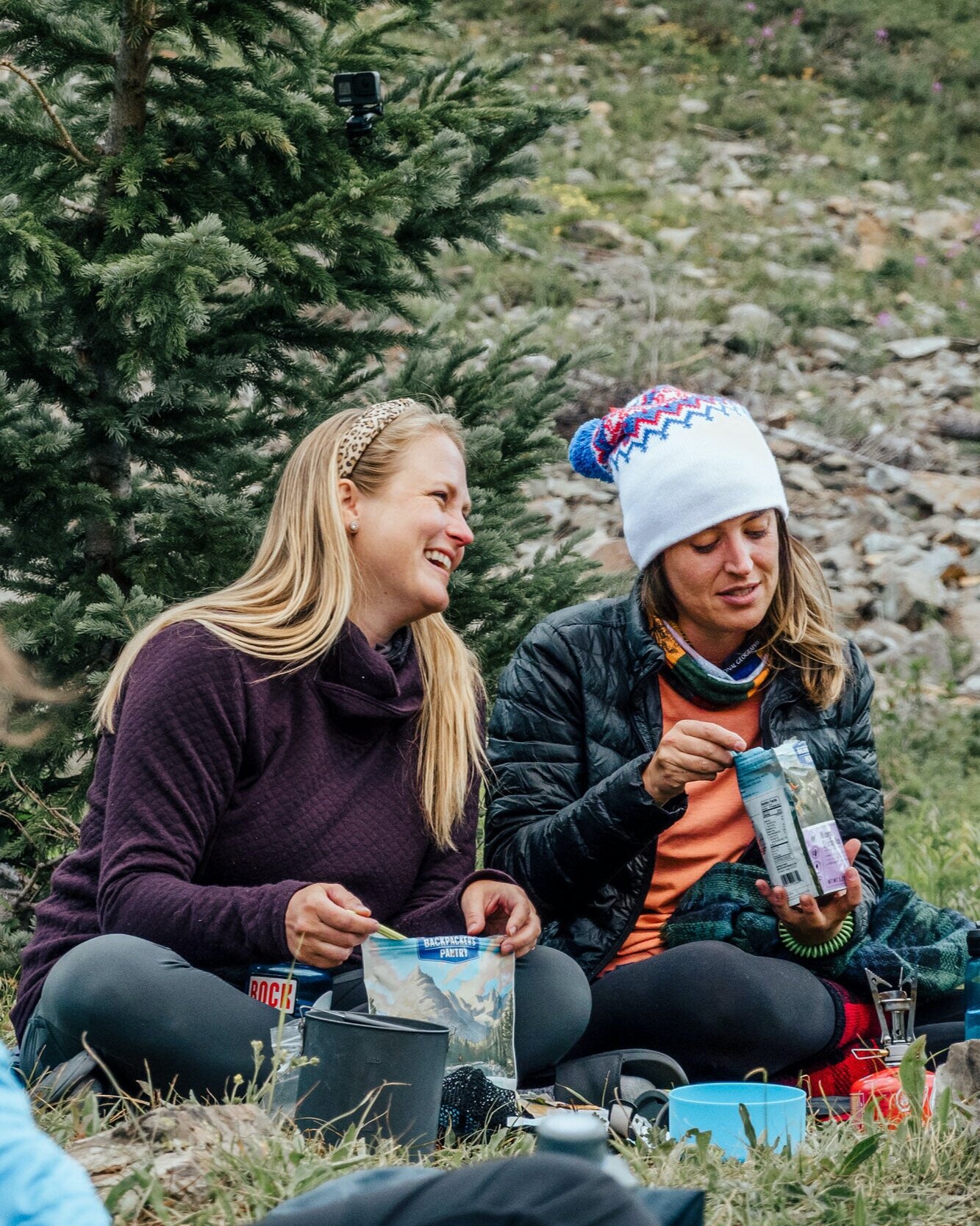
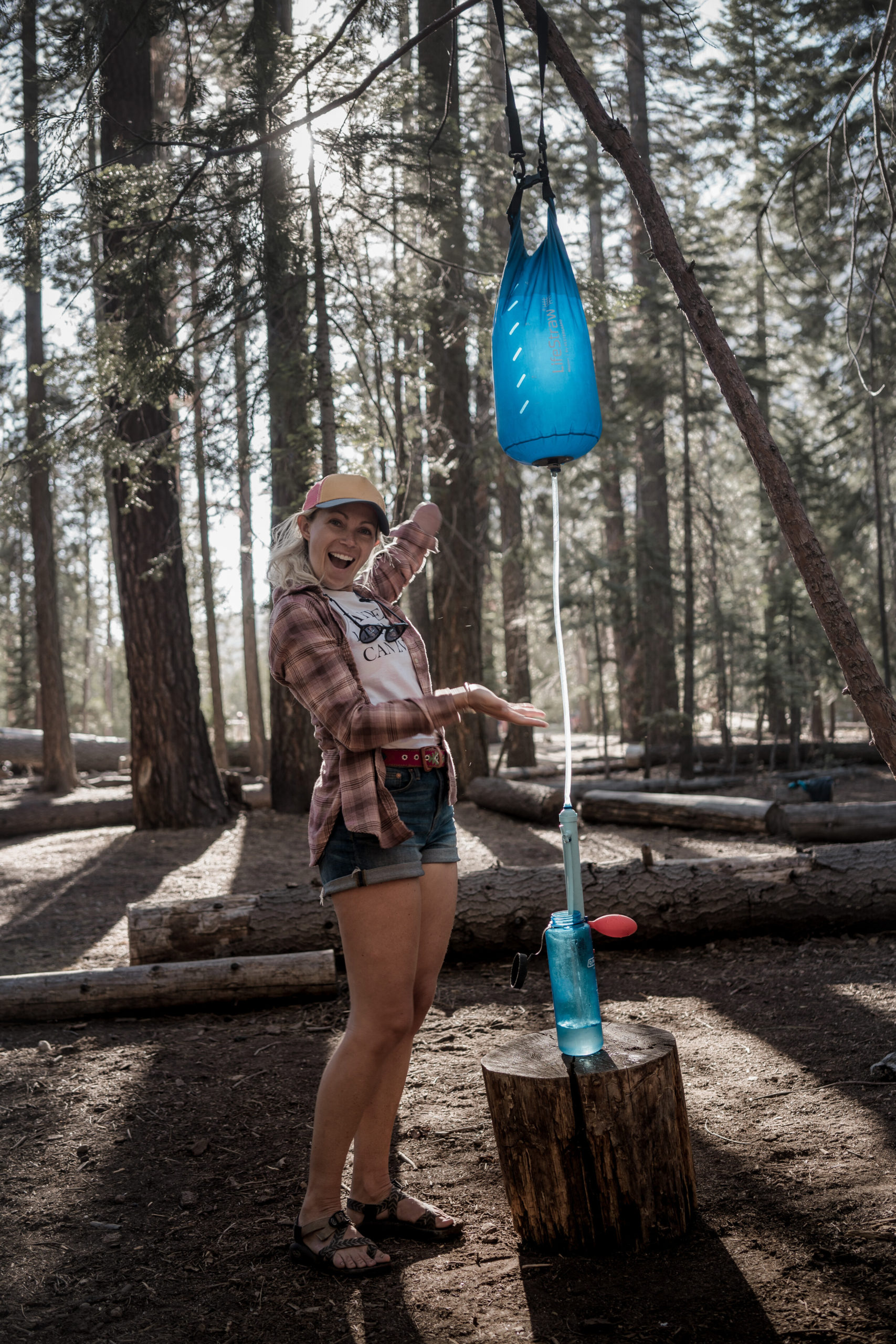
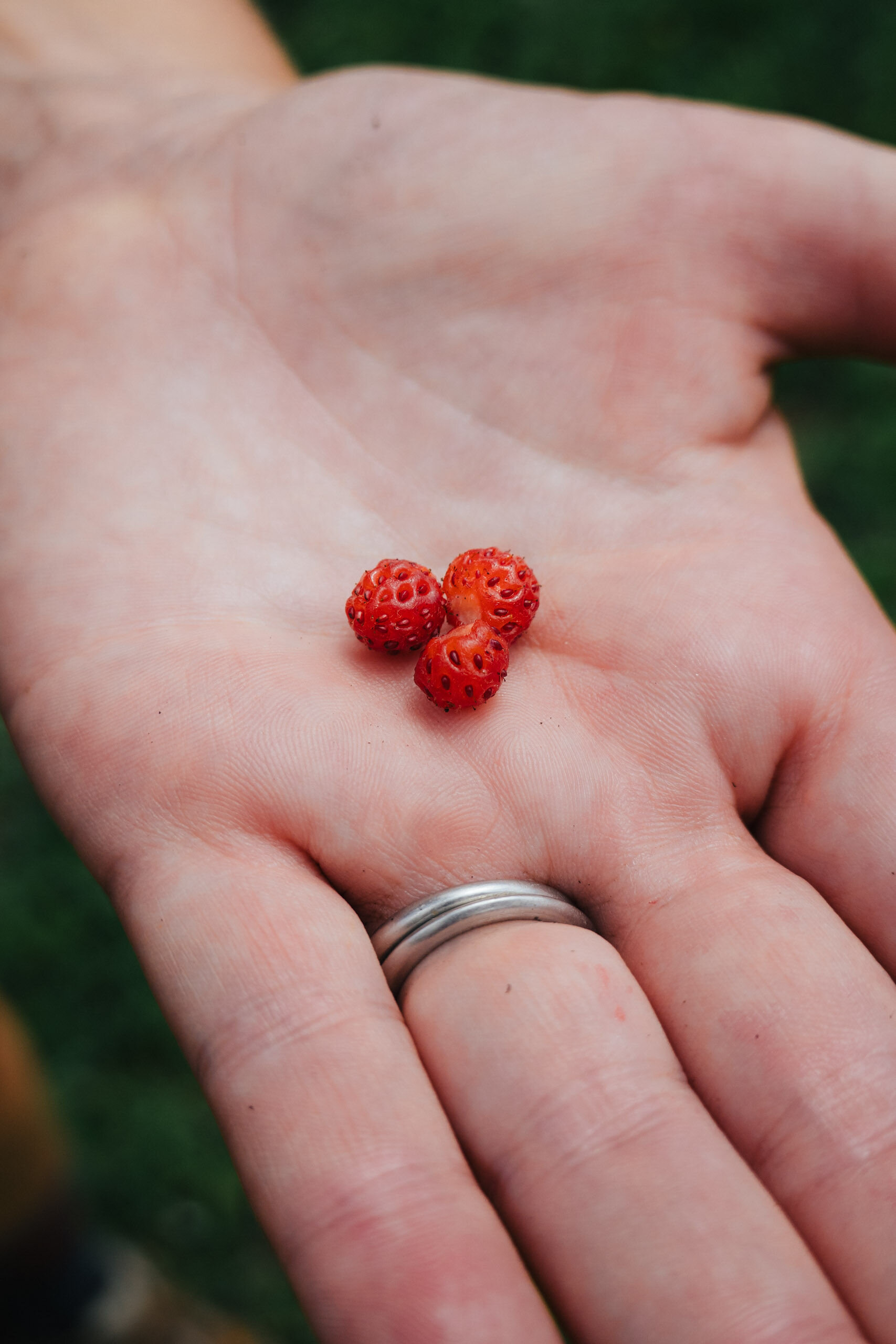
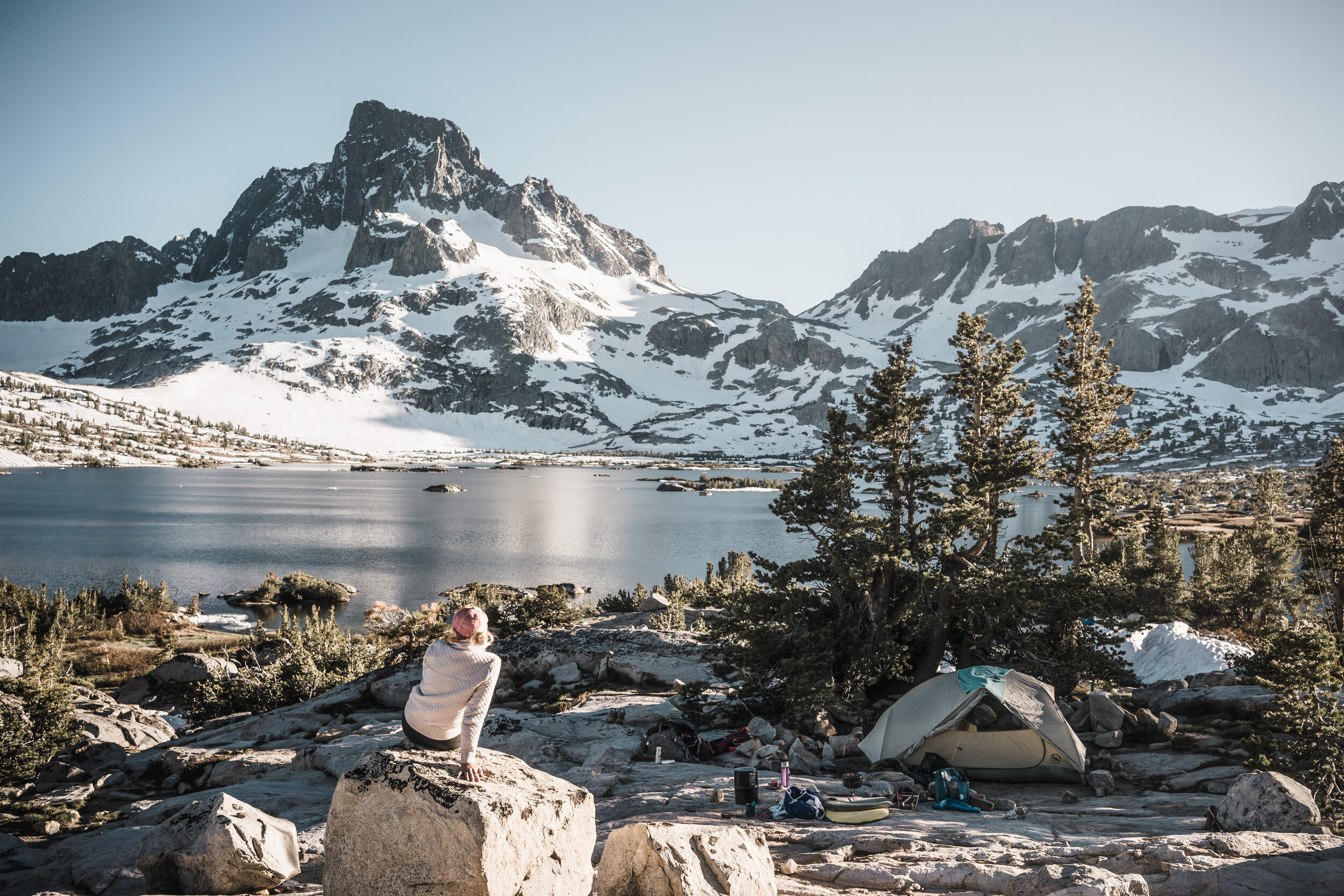
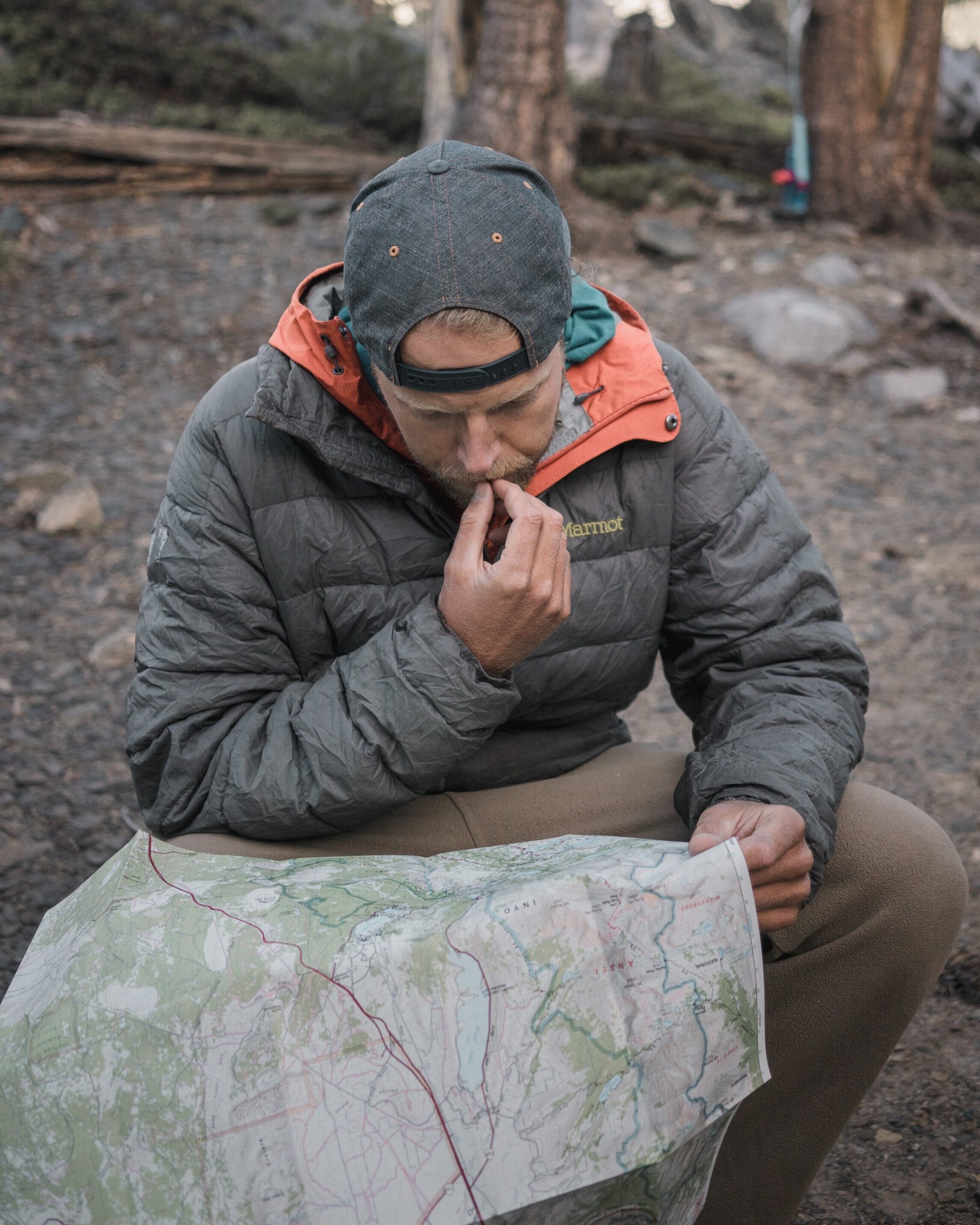
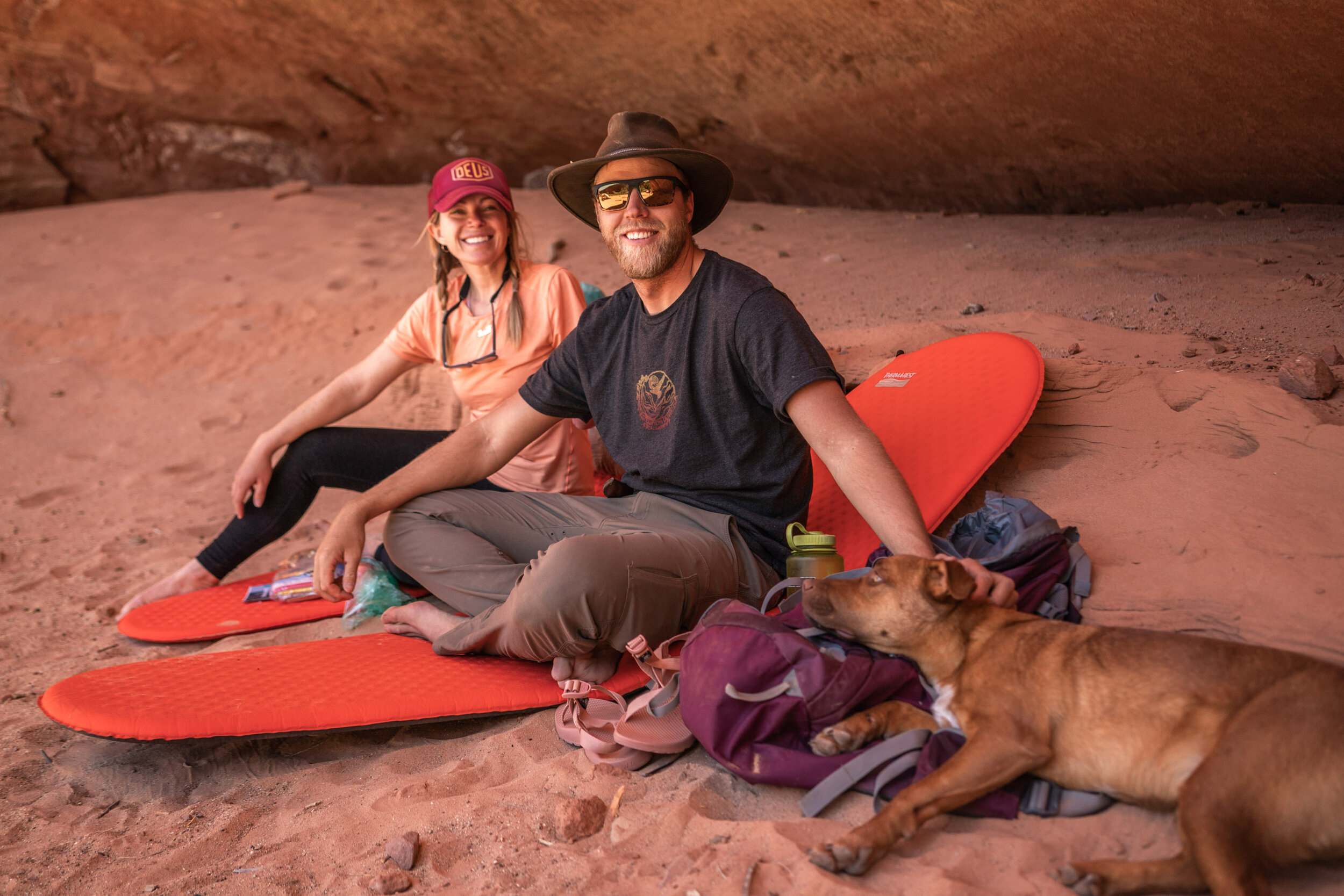
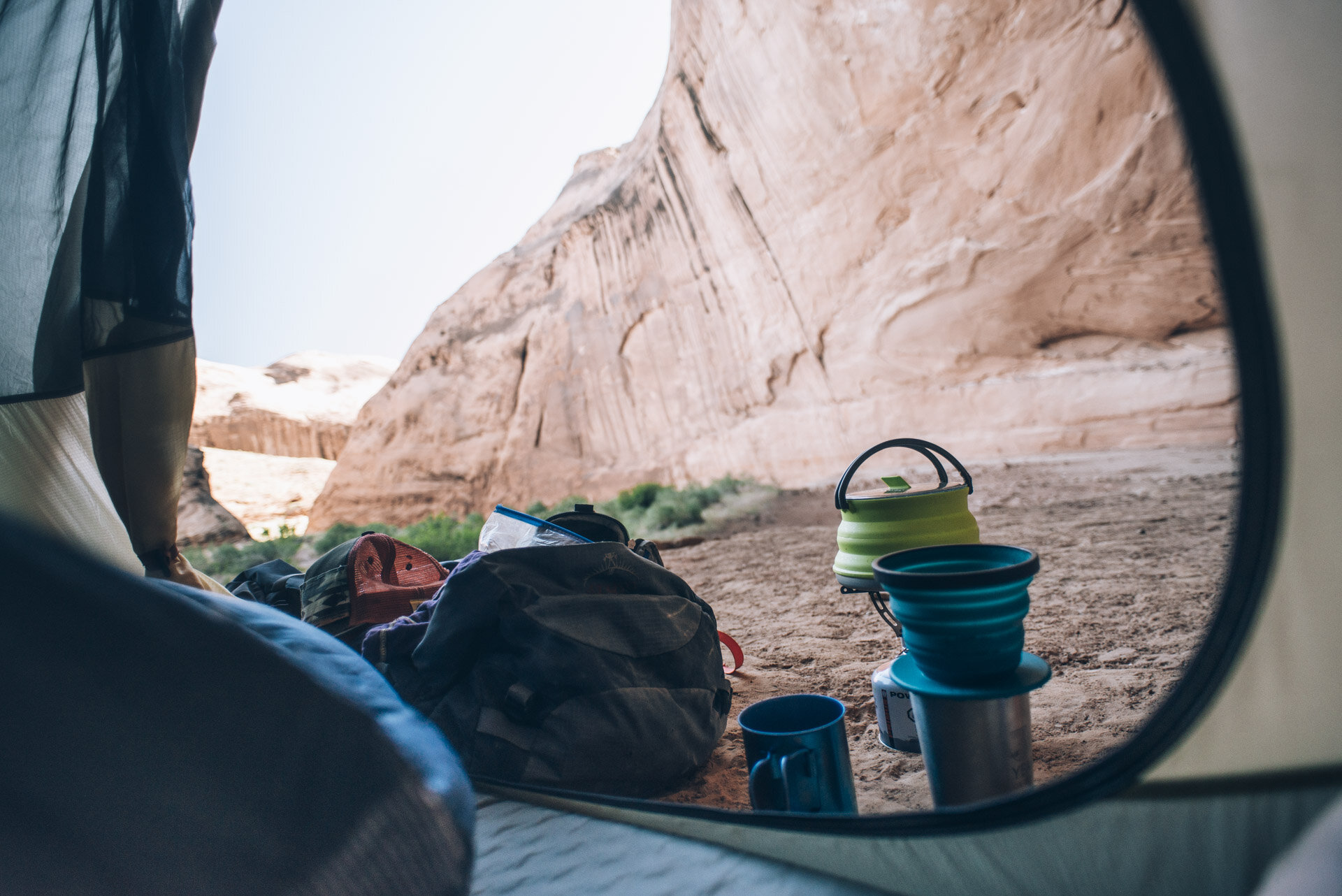

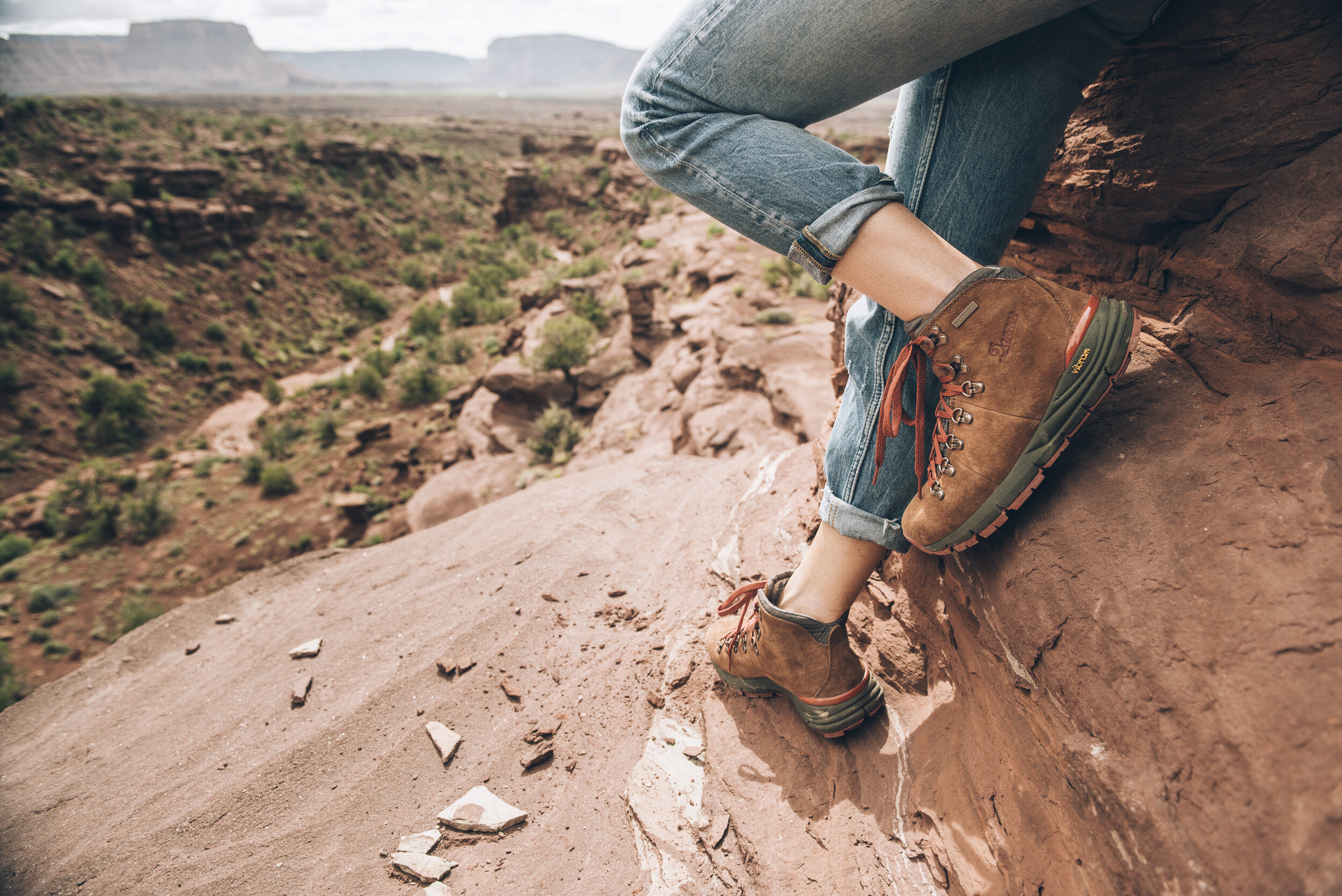
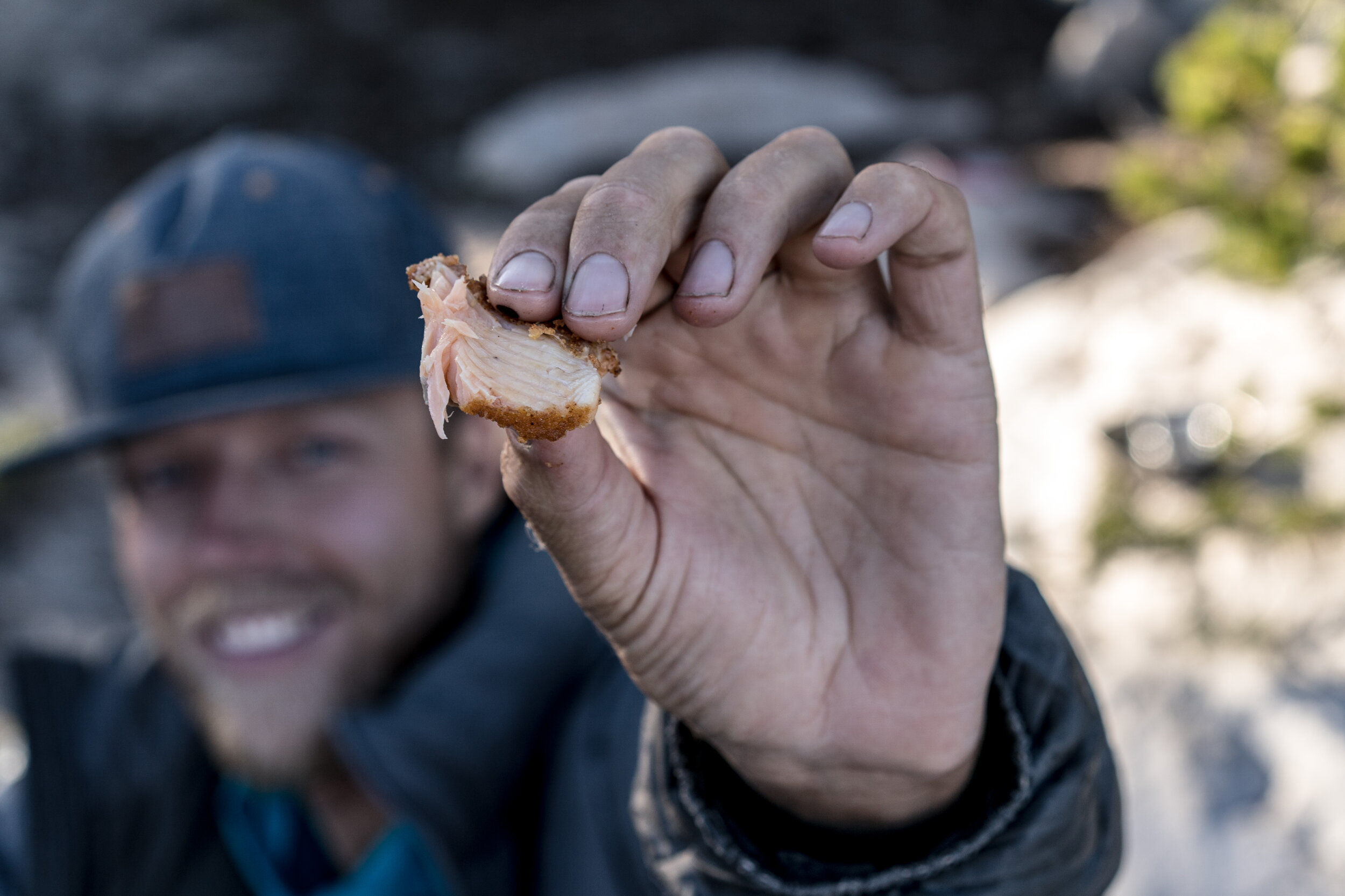
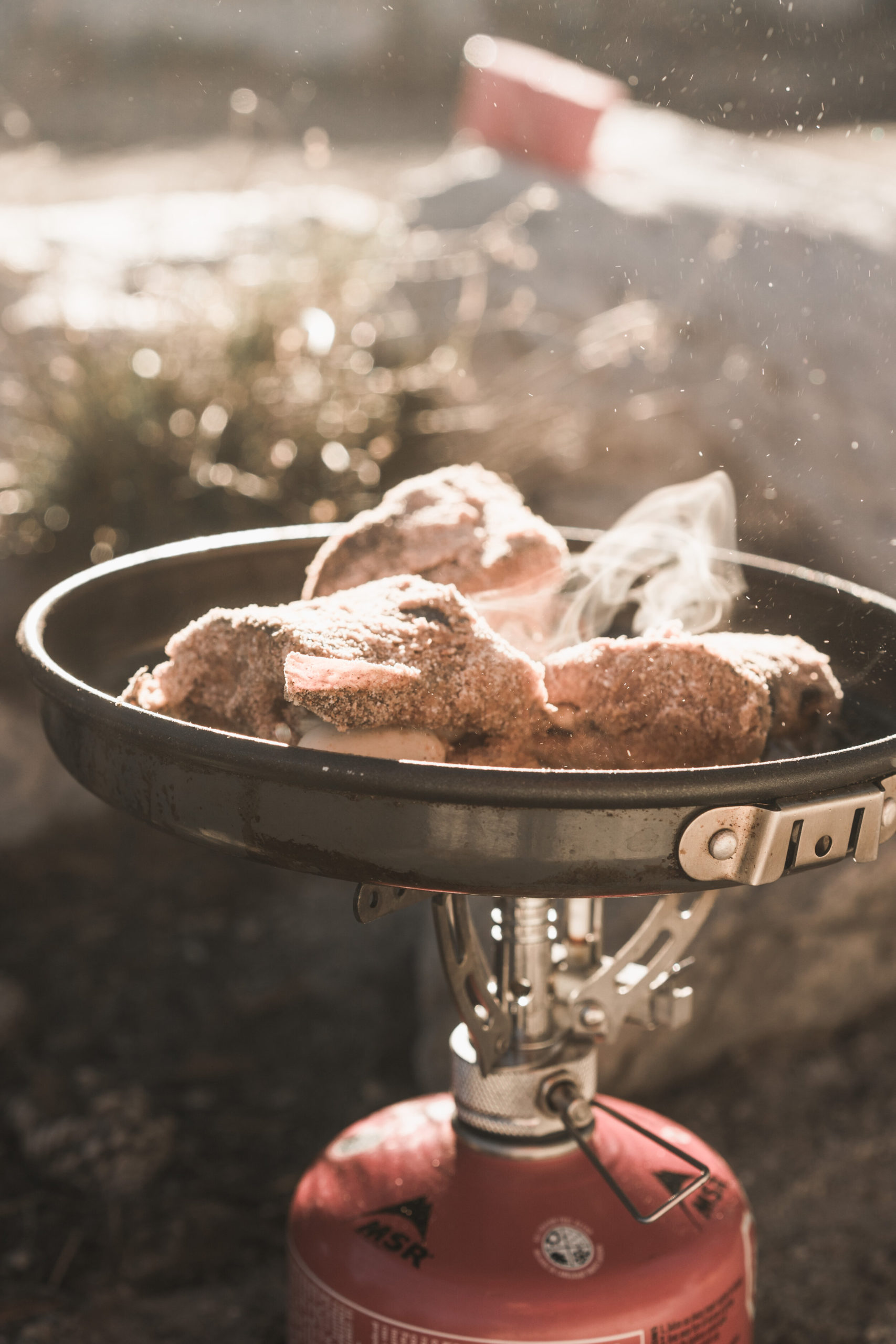

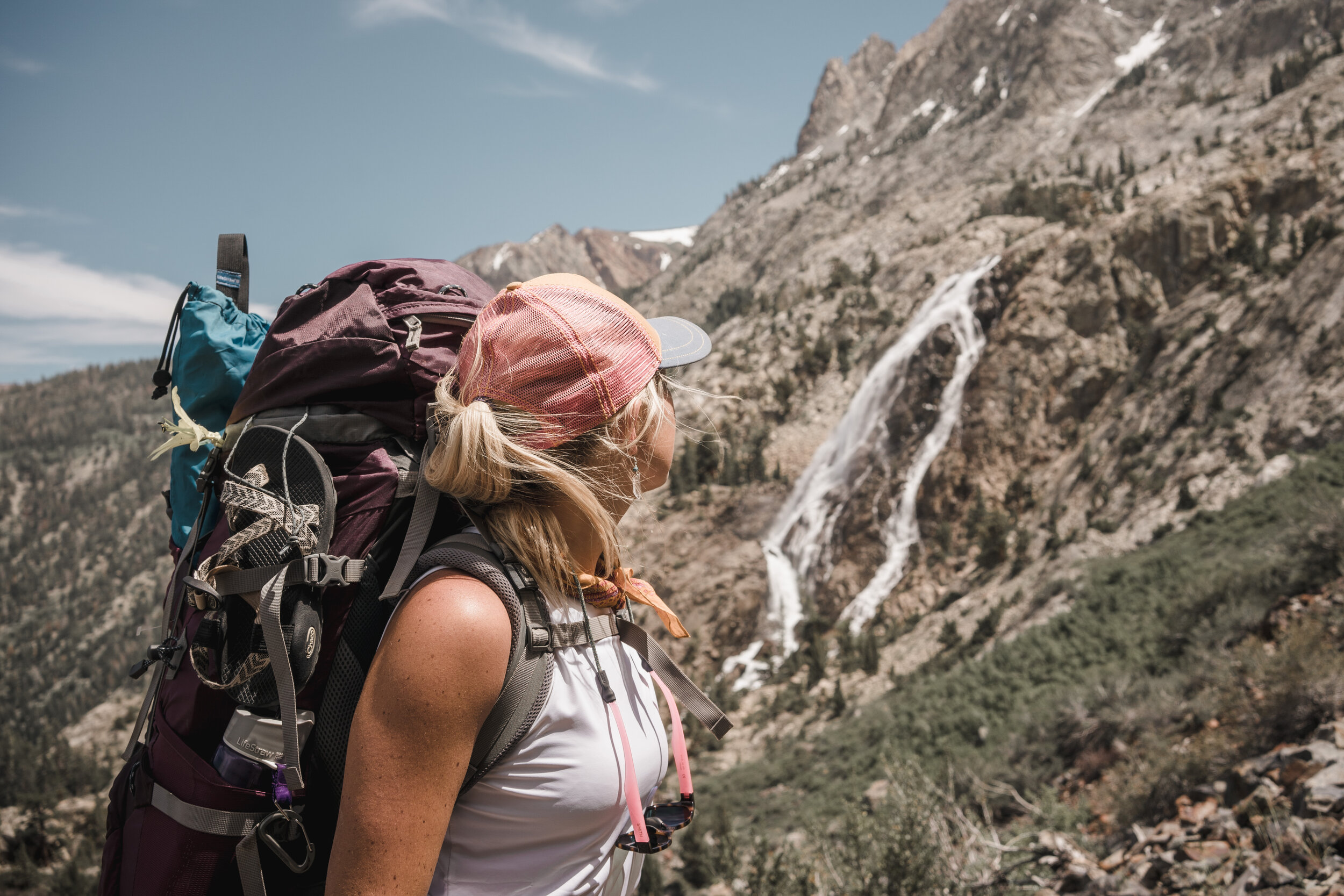
Comments +